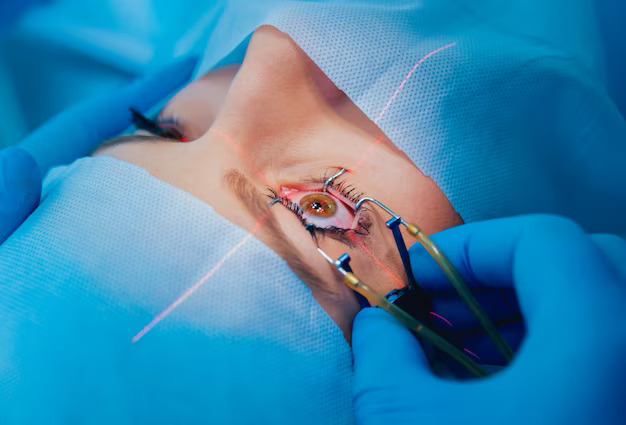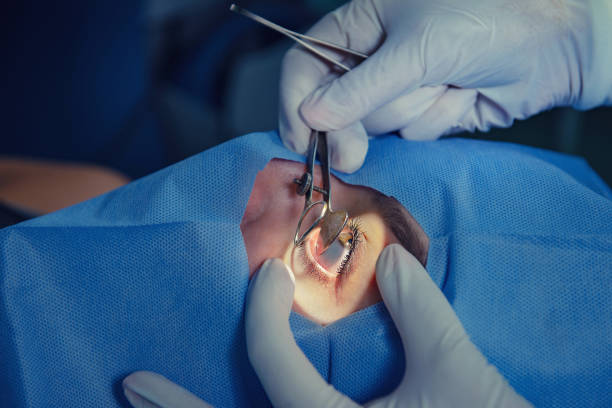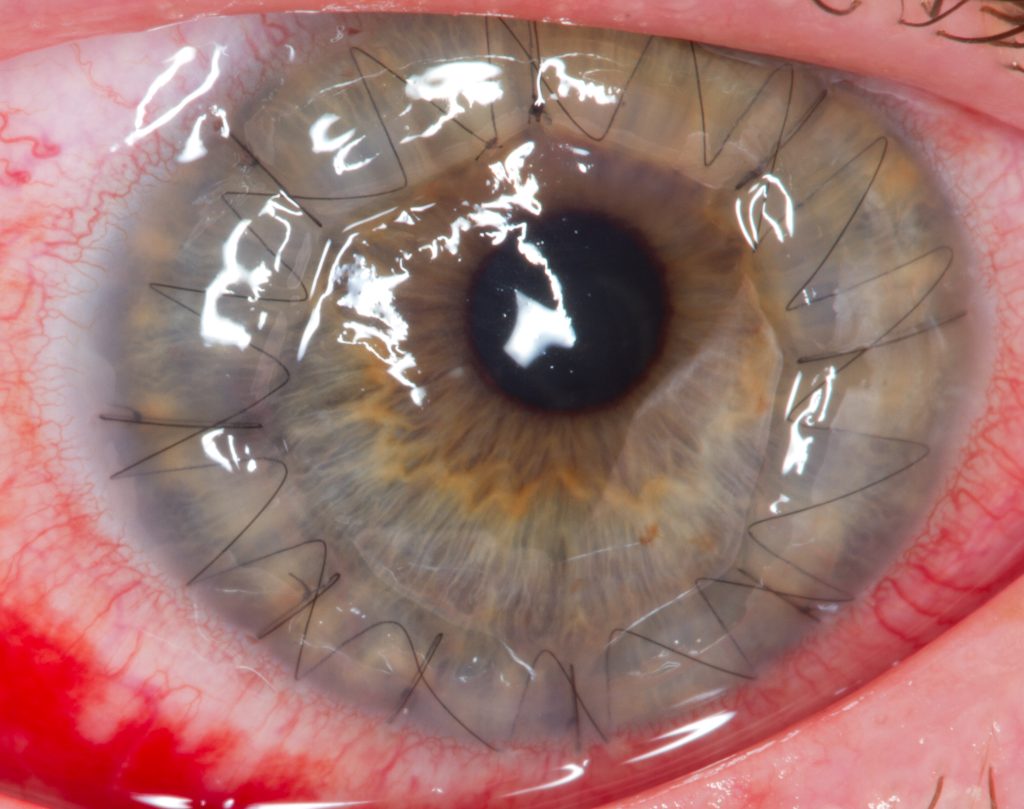Previous Eye Surgery Repair
Eye surgery repair, also known as ophthalmic surgery, is a medical procedure performed to correct, restore, or improve the function and structure of the eye. It addresses a wide range of eye conditions and disorders, including refractive errors, cataracts, glaucoma, retinal issues, and more. In this context, we’ll explore the concept of eye surgery repair and its significance.

Common Types of Eye
Surgery Repair:
Common types of eye surgery repair include LASIK, used to correct refractive errors, cataract surgery to replace the cloudy lens, and glaucoma surgery to lower intraocular pressure. Retinal surgery addresses issues like retinal detachment, while corneal transplants replace damaged corneas. These procedures aim to improve vision, preserve eye health, and prevent further damage. It’s essential to consult with an ophthalmologist to determine the most suitable treatment for specific eye conditions and concerns.
Cataract Surgery:
Cataract surgery is a common procedure that removes the cloudy natural lens affected by cataracts and replaces it with an artificial intraocular lens (IOL). This surgery effectively restores clear vision and is typically done on an outpatient basis. Most cataract surgeries are minimally invasive and involve a small incision and the use of ultrasound technology to break up the clouded lens for removal. It’s a safe and highly successful surgery, often leading to improved vision and a better quality of life.


Glaucoma Surgery:
Glaucoma surgery is a medical procedure designed to lower intraocular pressure in the eye, which is crucial for managing glaucoma—a group of eye conditions that can lead to optic nerve damage and vision loss. Various surgical techniques are employed, including trabeculectomy, trabeculoplasty, and drainage implant procedures. The goal is to improve the outflow of aqueous humor (the eye’s internal fluid) to reduce pressure. Glaucoma surgery is typically considered when other treatments, like eye drops or laser therapy, are ineffective. It can help prevent further vision loss in glaucoma patients.
Corneal Transplant:
A corneal transplant, also known as keratoplasty, is a surgical procedure in which a damaged or diseased cornea is replaced with a healthy donor cornea. The cornea is the clear front surface of the eye that plays a crucial role in focusing light. Corneal transplants are performed to restore vision and address conditions such as corneal scarring, keratoconus, or corneal infections. There are different types of corneal transplants, including full-thickness and partial-thickness transplants, depending on the specific needs of the patient.

Significance of Eye Surgery Repair:

Vision Improvement:
Vision improvement is the enhancement of visual acuity and clarity, often achieved through various methods, including corrective lenses, laser eye surgery, or intraocular lens implants. These approaches aim to address refractive errors like nearsightedness, farsightedness, and astigmatism. Vision improvement procedures, such as LASIK or cataract surgery, can significantly reduce or eliminate the need for glasses or contact lenses. They lead to better vision quality, improved daily functioning, and an overall higher quality of life for those seeking clearer and more comfortable vision.
Preventing Vision Loss:
Preventing vision loss is a crucial goal in eye care. Regular eye exams are essential to detect and address issues early. Managing conditions like glaucoma, diabetic retinopathy, and macular degeneration through medication, laser therapy, or surgery can prevent further vision deterioration. Protecting eyes from UV radiation with sunglasses and maintaining a healthy lifestyle with a balanced diet and exercise can also reduce the risk of eye diseases. Lastly, practicing good eye hygiene, avoiding eye strain, and taking breaks during screen time can help maintain healthy vision. Overall, proactive eye care and early intervention are key to preventing vision loss and preserving eye health.

Enhancing Safety:
Eye surgery can address structural issues, such as misaligned eyes (strabismus) or eyelid abnormalities, reducing the risk of injury and improving ocular comfort.
Rehabilitation:
After eye injuries or trauma, surgery may be necessary to repair damaged structures, such as the cornea, lens, or retina. This can be critical for a person’s visual rehabilitation.
Quality of Life:
For individuals with severe vision problems, eye surgery repair can make a profound difference in their daily activities, independence, and overall well-being.
Challenges and Risks:
Eye surgery repair is a delicate field, and not without risks. Complications can include infection, inflammation, scarring, and, in rare cases, vision loss. Choosing a skilled and experienced ophthalmic surgeon and following post-operative care instructions are essential to minimize these risks.
In conclusion, eye surgery repair is a crucial medical field that addresses a wide range of vision issues and disorders. It offers significant benefits by improving vision, preventing further vision loss, and enhancing overall quality of life for those who undergo these procedures. However, patients should carefully consider the potential risks and select a qualified eye surgeon to ensure the best possible outcome.

